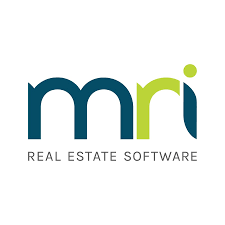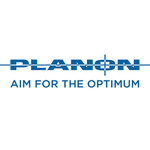Yes, IWMS software can be accessed from various devices and platforms. As a cloud-based service, it is accessible from any internet-connected device, including laptops, desktops, tablets, and smartphones. Furthermore, most IWMS software is interoperable with a variety of operating systems, making it available on several platforms like Windows, Mac, Android, and iOS. Users may now access and manage their IWMS data and tasks on the road, enhancing efficiency and productivity.
List of Best IWMS Software
Discover the power of Business Wire software - an essential tool for enhancing team productivity and optimizing processes. With its impeccable IWMS capabilities, it allows for seamless tracking of space utilization and full control over property mana...Read More Business Wire
Spacewell - the groundbreaking Workplace Management solution that connects your facilities through IoT technology. Streamline your facility management processes and boost efficiency with automated tasks for managers, cleaners, and technicians. With s...Read More Spacewell
SeQure is a workplace management system designed for modern businesses. Simplify and enhance your workspace with our comprehensive set of tools. Whether youre a small company or a multinational corporation, SeQure is the essential solution for seamle...Read More SeQure - Integrated Workplace
Discover the power of Axxerion for efficient workplace space and resource management. With its comprehensive features, Axxerion empowers you to make informed decisions about space utilization and easily identify any resource gaps. Say goodbye to limi...Read More Axxerion
Flairdocs is a IWMS software designed to enhance your workspace management. It leverages advanced technology to efficiently monitor and allocate space and resources for your rooms and employees, utilizing real-time data. As a certified solution, Flai...Read More Flairdocs
ARCHIBUS, a IWMS solution that simplifies and automates workplace reservations and service procedures. Designed with sophisticated capabilities, it boosts asset management strategies and extends the lifespan of assets. Say farewell to laborious tasks...Read More ARCHIBUS
Experience the power of SpaceIQ - the leading IWMS software that revolutionizes your workplace. Effortlessly manage multiple locations with precision through streamlined space and asset planning, eliminating errors and delays. Transform operations ac...Read More SpaceIQ
OfficeSpace, the premier IWMS solution for your company. Keep track of every aspect of your organization with our intuitive visual directory. Our software streamlines day-to-day operations and offers in-depth reporting for informed allocation decisio...Read More OfficeSpace
Rosmiman IWMS is a tool for effortlessly managing your real estate business. Our comprehensive software provides access to all necessary resources, streamlining your operations and allowing you to conduct business from anywhere, at any time. With Ros...Read More Rosmiman
eFACiLiTY Enterprise Facility Management is a software solution for all your facility and workplace management needs. Featuring comprehensive CAFM/IWMS capabilities, eFACiLiTY streamlines operations and addresses sustainability, health, and well-bein...Read More eFACiLiTY Enterprise Facility Management
Accruent Project Management is a software solution for streamlined corporate project management. Specifically designed to meet the needs of companies in the construction industry, it reduces costs and maximizes efficiency by simplifying tasks and org...Read More Accruent-Project Management
QuickFMS is a facility management software that revolutionizes the way you manage your business and infrastructure. It utilizes a cloud-based platform to effectively organize and optimize all aspects of facility operations. QuickFMS empowers you to e...Read More QuickFMS
iOFFICE solution for maintenance managers. With its powerful facility management software, iOFFICE offers comprehensive support for all maintenance needs. From efficient contractor sourcing to accurate task management, iOFFICE streamlines the entire...Read More iOFFICE
eFACiLiTY® Space Management is a solution that empowers organizations to efficiently manage and allocate their facility space to departments and employees. With real-time occupancy insights and utilization analysis, businesses can make informed de...Read More eFACiLiTY® Space Management
MRI Software is customizable solution, specifically created for real estate professionals, owners, and investors. It simplifies and improves asset management, enables efficient workforce management, tracks the entire investment journey, and automates...Read More MRI Software
Planon Software is the leading choice for plant maintenance solutions for national and international real estate companies. With over 35 years of experience, it has a strong global presence in more than 40 countries and is used by over 2000 satisfied...Read More Planon Software
Trimble Project Management is ainnovative software that streamlines project management by minimizing risks and optimizing pre-project planning. With its advanced features, you can effortlessly monitor multiple budgets and cost projections, ensuring s...Read More Trimble Project Management
eFACiLiTY® Facility Booking System is a web-based reservation solution that empowers you to effectively manage meeting and conference rooms, along with other shared and personal facilities. This user-friendly software simplifies and streamlines th...Read More eFACiLiTY® Facility Booking System
Learn More About IWMS Software
- What Is IWMS Software?
- What Are The Recent Trends In IWMS Software?
- Benefits Of Using IWMS Software
- Important Factors To Consider While Purchasing IWMS Software?
- What Are The Key Features To Look For In IWMS Software?
- Why Do Businesses Need IWMS Software?
- How Much Time Is Required To Implement IWMS Software?
- What Is The Level Of Customization Available In IWMS Software?
- Which Industries Can Benefit The Most From IWMS Software?
- Conclusion
What Is IWMS Software?
IWMS stands for Integrated Workplace Management System, and it is a comprehensive software solution that enables enterprises to manage their complete workplace operations and infrastructure. It is a complete system that incorporates a variety of features, including real estate management, facility management, sustainability, and maintenance, all on one platform.
At its foundation, IWMS software is intended to streamline and optimize workplace processes, boost efficiency, and save operating costs. It creates a consolidated database for all workplace-related information, allowing businesses to make data-driven decisions and improve overall performance. One of the most important advantages of IWMS software is its ability to interact with other corporate programs such as HR, finance, and project management systems.
This interface enables smooth collaboration and data sharing across multiple departments, hence improving communication and productivity. In addition to managing physical space and assets, IWMS software offers comprehensive reporting and analytics capabilities, allowing firms to get important insights into their operations and discover areas for development.
It also enables for customization to match each organization's unique demands, making it a versatile and scalable solution. With the advent of remote and hybrid work environments, IWMS software has become even more important for enterprises to keep track of their workplace management. It provides a comprehensive perspective of the organization's facilities, assets, and people, making it easier to respond to changing workplace dynamics.
What Are The Recent Trends In IWMS Software?
Over the last few years, the market for Integrated Workplace Management System (IWMS) software has grown significantly. As businesses seek to streamline their operations and optimize their workplace initiatives, the need for IWMS software has grown.
We will look at recent trends in IWMS software to help you make an informed decision about which solution is best for your organization's needs.
1. Cloud-Based Solutions: One of the most significant changes in IWMS software is the migration to cloud-based solutions. Cloud-based IWMS provides numerous advantages, including scalability, accessibility, and cost-effectiveness. With the growing popularity of remote and flexible working, cloud-based solutions enable employees to access software from any location, at any time, and using any device.
2. Mobile Compatibility: Another trend in IWMS software is the incorporation of mobile capabilities. As employees increasingly rely on smartphones and tablets for work, IWMS suppliers are introducing mobile apps to make it easier to access and manage office duties. This includes requesting maintenance, scheduling meetings, and sending work orders, among other things.
3. IoT Integration: The Internet of Things (IoT) has found its way into IWMS software. With the integration of sensors and beacons, IWMS solutions can now collect real-time data on space use, occupancy, and environmental variables. This information enables firms to make more educated decisions about workplace optimization and resource management.
4. Predictive Analytics: In addition to IoT connection, IWMS software also includes predictive analytics to help firms plan for the future. This tool analyzes data to estimate trends and future demands, helping firms to make the best use of their space and resources.
5. AI And Machine Learning: Artificial intelligence (AI) and machine learning (ML) are also gaining traction in the area of IWMS software. AI and machine learning algorithms can scan enormous volumes of data to detect patterns and give data-driven recommendations for workplace efficiency.
6. Emphasis On Employee Experience: IWMS software is no longer just about managing space and assets; it also considers the employee experience. Wellness initiatives, feedback surveys, and flexible workplace alternatives are examples of features being implemented by vendors to prioritize employee well-being.
Benefits Of Using IWMS Software
Introduction: IWMS software, also known as Integrated Workplace Management Systems, is an innovative technology solution designed to help businesses streamline their operations and manage their workplace effectively. This comprehensive software offers a wide range of benefits to help organizations achieve their goals efficiently.
We will explore the top benefits of using IWMS software and help you make an informed decision for your organization.
1. Increased Efficiency: One of the primary benefits of using IWMS software is improved efficiency. This software automates various processes such as facility and asset management, space planning, and maintenance, which helps save time and resources. With all data and processes centralized in one platform, it eliminates the need for manual work and minimizes human error, resulting in increased productivity and efficiency.
2. Cost Savings: Another advantage of IWMS software is cost savings. By automating processes, organizations can save money on labor costs and reduce the need for manual data entry. Additionally, the software provides insights into resource allocation, energy consumption, and maintenance costs, helping businesses make informed decisions and cut unnecessary expenses.
3. Enhanced Visibility And Control: IWMS software offers real-time visibility and control over various aspects of the workplace, such as space utilization, asset performance, and compliance. With advanced reporting and analytics capabilities, businesses can gain valuable insights into their operations and make informed decisions. This increased visibility and control lead to better planning and efficient resource allocation, thus improving the overall performance of the organization.
4. Improved Collaboration And Communication: Effective communication and collaboration are essential for any business to succeed. IWMS software offers features such as team calendars, task management, and project tracking, which facilitate collaboration among team members and improve communication between different departments. This results in a more streamlined workflow and efficient decision-making.
5. Compliance Management: Compliance with laws and regulations is crucial for any business, and non-compliance can result in hefty fines and legal consequences. IWMS software helps organizations stay up-to-date with compliance requirements by providing real-time alerts and notifications, ensuring that all processes are in line with the latest regulations.
Important Factors To Consider While Purchasing IWMS Software?
When purchasing IWMS (Integrated Workplace Management System) software, it is vital to examine the following factors:
1. Features And Functionality: The IWMS software's features and functionality should be the first and most important consideration. Make sure to examine your organization's goals and objectives before selecting a software solution. Check for capabilities like space management, lease management, maintenance management, and project management to ensure that the program can properly manage your workplace.
2. Integration And Interoperability: Another important consideration is the software's interoperability with your current systems and software. To avoid compatibility difficulties, use IWMS software that integrates effortlessly with your organization's present IT infrastructure.
3. User-Friendliness And Ease Of Use: In order to reap the most benefits, the IWMS software should be simple and straightforward to use. It should have a simple and straightforward design that allows employees at all levels to explore and use the software effectively.
4. Customization And Scalability: Each business has distinct needs and workflows. As a result, it is critical to select software that can be adjusted to meet your organization's specific requirements. Furthermore, ensure that the program is scalable to allow for future modifications or expansions in your business.
5. Cloud-Based vs. On-Premise: Determine whether you prefer cloud-based or on-premise IWMS software. While on-premise software may provide better control and protection, cloud-based solutions allow greater flexibility and accessibility, particularly for distant personnel.
6. Vendor Support And Training: Before acquiring any program, investigate the vendor's support and training choices. Choose a vendor who provides comprehensive training and continuous support to guarantee that your staff can utilize the program efficiently.
7. Data Security And Privacy: Data security is essential, especially when dealing with sensitive information including personnel data, financial records, and facility information. Look for IWMS software that includes strong security measures including data encryption and user access limits.
8. Pricing And ROI: Finally, assess the software's cost and prospective return on investment. Look for software that has a good balance of functionality and pricing and may generate a significant ROI in terms of time and cost savings for your firm. By taking these criteria into account, you can make an informed decision about which IWMS software is most suited to your organization's needs and will result in efficient and successful workplace management.
What Are The Key Features To Look For In IWMS Software?
When it comes to investing in Integrated Workplace Management System (IWMS) software, buyers should look for a few essential aspects to make an informed purchase. These features not only help firms manage their workplace operations more efficiently, but they also increase productivity, lower expenses, and improve the entire workplace experience.
Here are the most important things to consider while considering IWMS software:
1. Integrated Platform: One of the most significant features to look for in IWMS software is an integrated platform that encompasses all areas of workplace management, including real estate, facility, and space management. This enables seamless communication, collaboration, and data sharing across departments, resulting in a more holistic approach to workplace management.
2. Real-Time Data And Analytics: Given the volume of data generated in the workplace, it is critical to have IWMS software that can gather, analyze, and present real-time data on an easy-to-use dashboard. This tool enables businesses to make data-driven decisions, recognize trends, and prepare for the future successfully.
3. Space Utilization And Optimization: IWMS software should be capable of correctly tracking and monitoring space usage in the workplace. This includes managing occupancy, analyzing unused areas, and modifying floor designs to increase space efficiency. This function saves firms money on real estate and increases productivity by ensuring employees have the appropriate environment for their tasks.
4. Maintenance And Asset Management: Another important aspect to consider is maintenance and asset management. This includes tracking assets, scheduling maintenance operations, and handling work orders and repairs. This capability allows enterprises to extend the life of their assets, reduce downtime, and save on maintenance expenditures.
5. Mobile Accessibility: In today's fast-paced workplace, it is critical to have IWMS software that is accessible via mobile devices. Employees may now report issues, schedule meeting rooms, and access data while on the go, enhancing efficiency and flexibility in managing office operations.
6. Compliance And Security: IWMS software should include strong security features to secure sensitive workplace data. Additionally, it should include compliance elements that ensure firms follow industry norms and standards.
7. Scalability: Organizations should examine the scalability of their IWMS software. As the workplace changes, the software should be able to adapt and grow alongside it. This includes the capacity to add new modules, users, and features to meet future business requirements.
Why Do Businesses Need IWMS Software?
Businesses today face growing complexity and difficulty in managing their buildings and real estate assets. Facilities and real estate management's responsibilities have expanded to include everything from space utilization management to equipment maintenance and regulatory compliance. Businesses are turning to Integrated Workplace Management System (IWMS) software to help them manage these duties and receive insights into their facilities' effectiveness. This complete software solution provides businesses with a unified platform for managing all areas of their facilities, such as space management, maintenance, asset tracking, and more. So, why do businesses require IWMS software?
Here are some of the primary reasons why IWMS is becoming an indispensable tool for modern businesses:
1. Centralized Management: IWMS software serves as a centralized repository for all facility-related data, such as space allocation, assets, maintenance schedules, and more. This eliminates the need for several systems and spreadsheets, simplifying management and increasing efficiency.
2. Increased Space Utilization: With escalating real estate costs, firms must maximize their existing space to its greatest capacity. IWMS software enables detailed space planning and analysis, allowing firms to make more educated decisions about space utilization and allocation.
3. Streamlined Maintenance: IWMS software automates maintenance procedures such as scheduling and tracking, work order management, and real-time upgrades. This streamlines maintenance procedures, saves downtime, and extends asset life.
4. Regulatory Compliance: IWMS software enables firms to comply with facility and real estate management requirements and standards. From safety requirements to environmental standards, IWMS software provides solutions for tracking and ensuring compliance.
5. Data-Driven Insights: Through comprehensive reporting and analytics functions, IWMS software provides significant insights into facility performance. This enables organizations to make data-driven decisions that improve operations and lower expenses.
How Much Time Is Required To Implement IWMS Software?
The time required to implement IWMS (Integrated Workplace Management System) software can vary depending on the specific solution and the size and complexity of your organization. Generally, the implementation process can take anywhere from a few months to a year or more.
To give you a better idea, here are the key factors that can influence the implementation timeline for IWMS software:
1. Needs Assessment: The first step in implementing an IWMS solution is identifying your organization's needs and goals. This can involve evaluating your current processes, workflows, and systems to determine the specific requirements for your IWMS software. The time required for this step can range from a few weeks to a couple of months.
2. Software Selection: With many IWMS solutions available, it is essential to carefully evaluate and select the one that best fits your organization's needs. This process can take several weeks to a few months, depending on the number of solutions you are considering, the complexity of your requirements, and your decision-making process.
3. Data Migration And Integration: The process of transferring data from your existing systems to the new IWMS software can take up a significant portion of the implementation timeline. The time required for this step can vary based on the volume and complexity of data, as well as the availability of IT resources.
4. Configuration And Customization: Once the software is selected, it needs to be configured and customized to meet your organization's specific needs. This can involve setting up workflows, permissions, and other settings, as well as creating custom reports and templates. The time for this step depends on the software's complexity and your customization requirements.
5. Training And User Adoption: For successful implementation, it is crucial to train your team on how to use the new IWMS system effectively. This can include user training and hands-on workshops to ensure that everyone understands the software's features and benefits. The time required for this step can range from a few weeks to a couple of months, depending on the size of your team and their technical proficiency.
What Is The Level Of Customization Available In IWMS Software?
The level of customisation available in IWMS (Integrated Workplace Management System) software varies by vendor and feature. However, most IWMS solutions provide a high level of customisation to meet the specific demands and preferences of various businesses. At the very least, IWMS software allows users to customize data fields and forms, adding or removing fields based on their individual needs.
This ensures that the system collects and saves meaningful data that is consistent with the organization's processes and workflows. Furthermore, many IWMS providers give clients the option of creating bespoke workflows and reports. This allows firms to streamline procedures and provide reports tailored to their specific requirements. Furthermore, some IWMS software provides customisable dashboards, allowing users to monitor and track key metrics and data in ways that are most relevant to them. In terms of branding, certain IWMS systems allow you to customize the software interface with your organization's logo and color scheme.
This contributes to a more coherent and professional appearance for the product, improving the user experience. It is crucial to note that, while IWMS software allows for a great amount of customisation, some features may be limited depending on the supplier. As a result, before making a purchase, customers must carefully consider their customized requirements and evaluate the capabilities of each software. This will ensure that the chosen IWMS solution can actually fulfill the organization's specific needs while driving optimum efficiency and production.
Which Industries Can Benefit The Most From IWMS Software?
IWMS (Integrated Workplace Management System) software is a powerful tool that can streamline and optimize various processes within an organization. While it is suitable for businesses of all sizes and industries, certain industries can benefit greatly from its features and functionalities.
We will explore which industries can benefit the most from IWMS software.
1. Real Estate And Property Management: Real estate and property management companies can benefit greatly from IWMS software. This industry deals with a large number of properties, tenants, and contracts, making it essential to have a centralized system for managing all the data. IWMS software can assist in managing lease agreements, maintenance schedules, and asset tracking, allowing companies to maximize their property investments and minimize costs.
2. Healthcare: Healthcare organizations have complex and stringent compliance requirements, making it crucial to have a system that can handle all their data securely. IWMS software can assist in managing medical equipment, tracking inventory levels, and ensuring regulatory compliance. It can also improve patient experiences by streamlining facility management processes, such as scheduling appointments and managing the maintenance of medical equipment.
3. Higher Education: Higher education institutions can benefit from IWMS software in various ways. As campuses grow in size and complexity, it becomes challenging to manage space allocation, maintenance, and facility utilization. IWMS software can help universities and colleges optimize their space usage, plan for future expansions, and reduce maintenance costs. It can also assist in managing student housing and tracking equipment and supplies across different departments.
4. Manufacturing: Manufacturing companies have complex and diverse operations, making it essential to have a centralized system to manage processes and data. IWMS software can aid in monitoring and managing production facilities, tracking inventory levels, and maintaining equipment. It can also assist in complying with health and safety regulations, streamlining supply chain management, and reducing downtime.
5. Government And Public Sector: Government agencies and public sector organizations manage a wide range of facilities, properties, and operations. IWMS software can assist in managing these assets, tracking maintenance and repair needs, and ensuring compliance with regulations. It can also help in identifying areas for cost-saving, streamlining procurement processes, and improving decision-making through real-time data analysis.
Conclusion
Finally, IWMS software provides numerous benefits for firms seeking to automate and enhance their real estate and facility management procedures. IWMS software can help firms boost productivity, cut expenses, and improve overall performance by managing data comprehensively and providing extensive reporting and analytics capabilities. When selecting IWMS software, it is critical to evaluate your specific company requirements, budget, and IT infrastructure.
To guarantee that the software you choose suits your needs, analyze its task management features, mobile functionality, and integration possibilities. To get the most out of your investment, involve key stakeholders and properly assess the program using demos, trials, and references before making a purchase. Furthermore, check that the software vendor provides adequate training and continuing support to ensure a successful implementation and user uptake.
Finally, with the correct IWMS software, firms may gain a competitive advantage, increase workplace efficiency, and make data-driven decisions to ensure success. We hope our buyer's guide has given you with useful insights and assistance to help you make an informed decision and select the best IWMS software for your organization's requirements.
IWMS Software FAQ's
Can IWMS Software Be Accessed Across Multiple Devices And Platforms?
Is IWMS Software Future-Proof And Adaptable To Emerging Technologies Like AI, Blockchain Or IoT?
Yes, IWMS software is meant to be future-proof and adaptable to upcoming technologies such as artificial intelligence, blockchain, and the Internet of Things. These software solutions are regularly updated and improved to reflect the most recent technical breakthroughs, ensuring that they remain relevant and effective for organizations in the long run.
IWMS software, which includes AI-powered analytics, blockchain-based data management, and integration with IoT devices, enables enterprises to stay ahead of the curve and streamline their operations with cutting-edge technology.
Is There A Free Trial Offered To Assess IWMS Software Before Committing?
Yes, many IWMS software suppliers provide a free trial period so that potential customers can evaluate the program before making a commitment. This allows them to evaluate the software's functionality, usability, and general fit for their specific requirements.
It also allows them to determine whether the software is compatible with their present systems and fits their budget requirements. Free trials normally last 14 to 30 days, allowing users to thoroughly explore the capabilities and benefits of IWMS software.
Does IWMS Software Offer Data Security Features And Meet Regulatory Compliance Standards?
Yes, IWMS software has strong data security measures in place to secure sensitive information and maintain regulatory compliance. It uses encryption, access limits, and regular data backups to protect data from illegal access and breaches. Furthermore, IWMS software is built to fulfill industry-specific compliance standards such as GDPR, HIPAA, and ISO 27001, ensuring your data's security and privacy.
Can IWMS Software Integrate Seamlessly With Existing Tools And Platforms?
Yes, IWMS software can smoothly interact with a variety of existing tools and platforms, allowing businesses to consolidate their data and processes. IWMS software can link to regularly used software like as ERP, HR systems, and CMMS via APIs and connectors. This integration streamlines procedures, increases data accuracy, and gives the organization a comprehensive perspective of its activities.




















